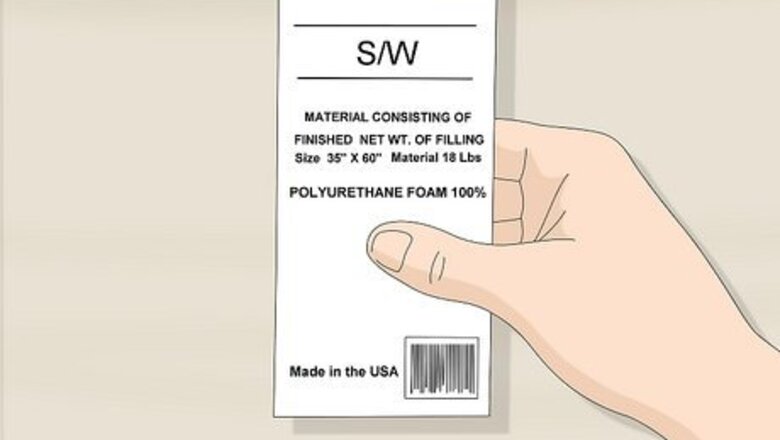
views
Pre-Treating the Stain
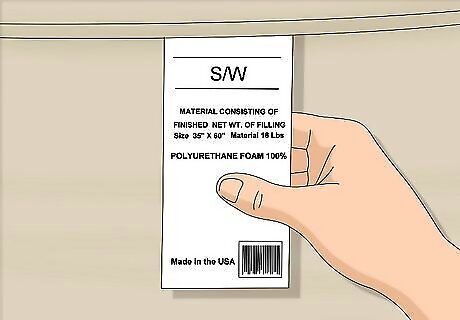
Check the care label. Couches are made of many different materials, and while some can be cleaned safely with water, others require special cleaning solutions. Have a look at the upholstery tag on your couch to look for the letter code W, S, SW, or X: W, S, and SW mean you can clean the couch with water- or solvent-based cleaners. X means you can't clean the couch with water or solvents, so you'll have to take it to a professional to clean the blood.
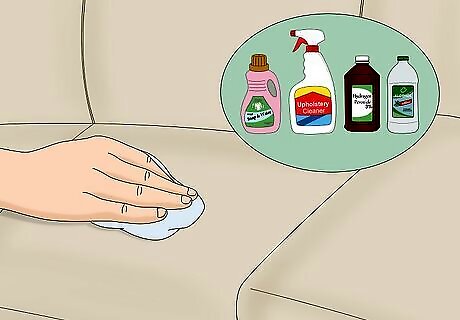
Spot test your cleaners. Before using any cleaner on your couch, you should always perform a spot test to ensure the cleaner won’t bleach the fabric, make the color bleed, or otherwise damage the material. Perform the spot test by applying cleaner to an inconspicuous area and letting it sit for 24 hours. Cleaners you may need to spot test for your couch are: Rubbing alcohol Hydrogen peroxide Soap and water solution Upholstery cleaner
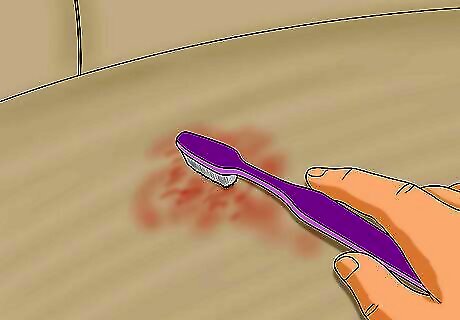
Brush away excess blood. Use a soft-bristled toothbrush to gently scrub the area and loosen any dried blood that may still be on the surface of the material. This will make the stain easier to clean. After brushing, wipe the area with a dry cloth to remove flakes of dried blood.
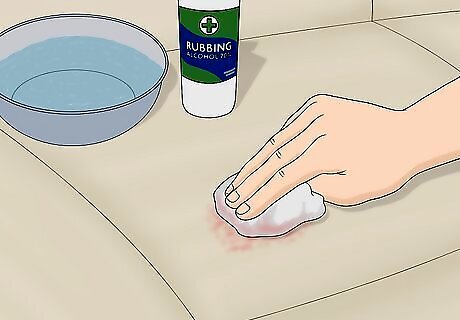
Blot the area with water or isopropyl alcohol. Dampen a clean cloth with cold water or rubbing alcohol. Wring out the cloth to remove excess liquid. Dab the stain with the damp white cloth to saturate the area with liquid. Use only cold water to blot the area, as hot water can set the stain. It’s important to use white cloths to clean the couch, otherwise dye from the cloths may transfer to the couch. Water is safe to use for couches marked with W and SW letter codes. Alcohol is safe to use on couches marked with S and SW codes.
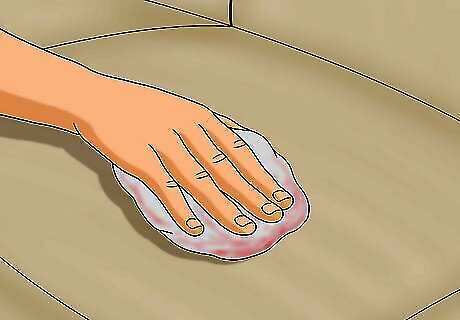
Dab the area dry. Use a fresh cloth to blot the area and remove excess blood and liquid from the couch. Be sure to blot rather than rub, as rubbing can push the stain deeper into the couch and make it harder to clean. Keep dabbing until the cloth comes away dry.
Cleaning the Stain
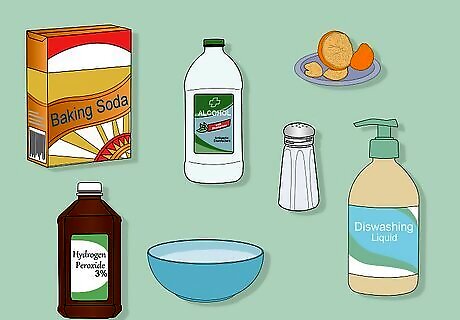
Choose a cleaning solution. Once the stain has been saturated, there are a few different cleaners you can use to remove the blood from the couch. Here are some of the most popular blood cleaners for couches: One part baking soda mixed with two parts water Fresh lemon juice mixed with a pinch of salt Hydrogen peroxide Rubbing alcohol (safe for S-only couches) One cup (235 ml) of cold water mixed with 2 teaspoons (10 ml) dishwashing liquid Hairspray
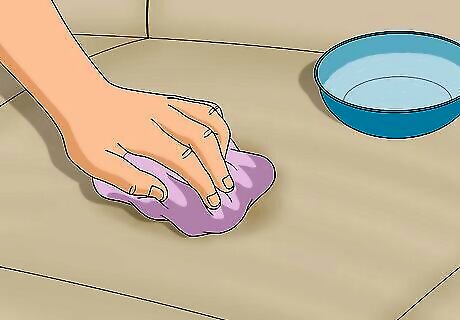
Blot the area with cleaner. Mix your cleaning solution in a bowl. Soak a clean cloth in the solution, and wring out the excess liquid. Blot the stained area with the cloth to saturate the stain with cleaner. Don’t rub the stain, as this could push the stain deeper into the material. After blotting the stained fabric, you can let the cleaning solution sit on the stain for 30 minutes before you wipe it away.
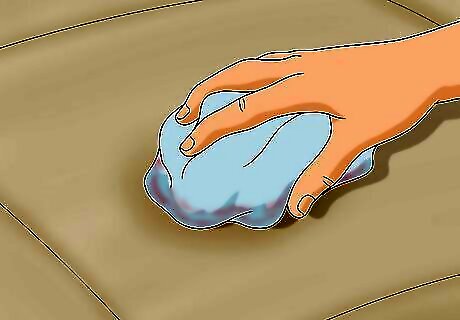
Blot the area with a clean cloth. Use a fresh, dry cloth to blot the area and absorb excess cleaner and moistened blood. Continue dabbing a fresh area of cloth into the couch until the cloth comes away clean and dry.
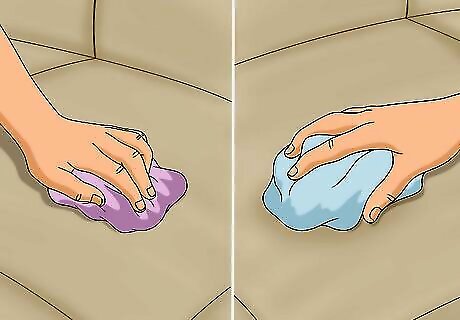
Repeat until the stain is gone. Continue alternating between dampening the area with cleaner and blotting it dry with a fresh cloth. Keep doing this until no more blood comes off on the dry cloth, and the stain is gone.
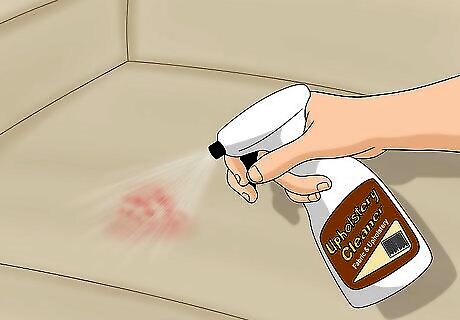
Tackle tough stains with upholstery cleaner. For a blood stain that doesn’t want to come out, you may have to try a commercial upholstery cleaner. Saturate a clean cloth with the cleaner and blot the stain with the cloth. Then, blot the area with a dry cloth to remove blood and cleaner. Look for an enzyme-based cleaner that’s safe for use on couches. These types of cleaners are specifically designed to break down proteins in organic stains like blood.
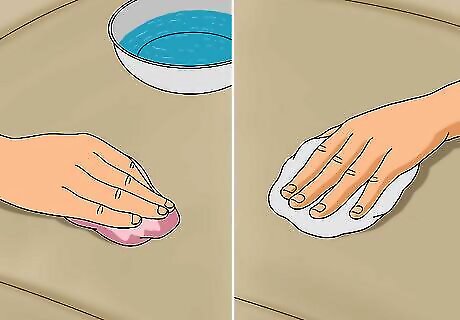
Rinse and dry the area. To rinse out excess cleaner from the couch, soak a clean cloth with cold water. Wring out the excess, and blot the couch to saturate the area with water. Switch to a dry cloth and blot the area to remove as much of the water and excess cleaner as possible. Let the area dry completely. To speed up drying, aim a fan at the wet spot. If you're working with an S-code couch, skip the rinsing step to prevent damaging the couch, and just blot the area with a dry cloth.
Keeping Your Couch Clean
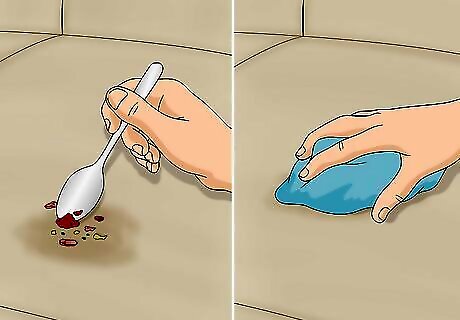
Address stains and spills right away. With food spills, use a spoon to pick up chunks of food. Dampen a clean cloth with cold water or alcohol (for S-code couches) and saturate the area. Blot with the cloth until the stain is gone, and then pat the area dry. When you clean spills and messes right away, the stains don’t have time to dry and set, and this makes it easier to clean them.

Clean the couch regularly. Keeping a couch looking great is easy if you stay on top of regular cleaning. To clean the couch, use a soft brush to gently scrub dirt and oil from the upholstery. Use the upholstery attachment and vacuum the couch, including the seams, cracks, and crevices. For the best results, repeat this cleaning process every two weeks.
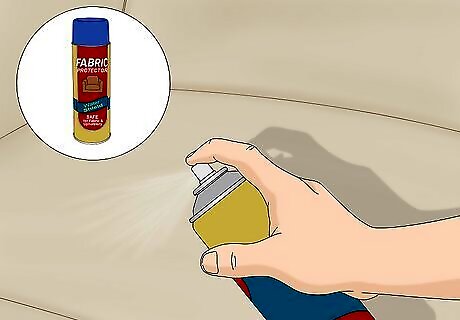
Spray the couch with an upholstery protector. There are commercial fabric and upholstery protectors available that you spray onto your couches and other fabric surfaces. These sprays protect the areas from stains and make cleaning easier. To apply these protectors: Shake the can Hold the can 6 inches (15 cm) from the couch Spray the entire surface of the couch with a thin and even layer Let the spray dry Apply a second coat
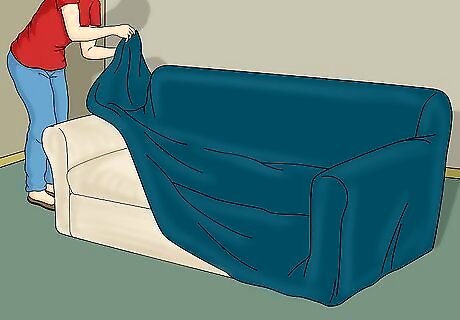
Install a fabric couch protector. Another way to protect couches from spills, dirt, and stains is to cover them with a washable fabric cover. You can either buy a special couch protector from a home or bath store, you can make your own, or you can use an old sheet or blanket to cover your couch. Wash the protector every one to two months to keep it clean, or anytime a spill occurs.















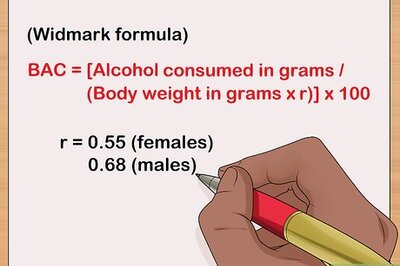
Comments
0 comment